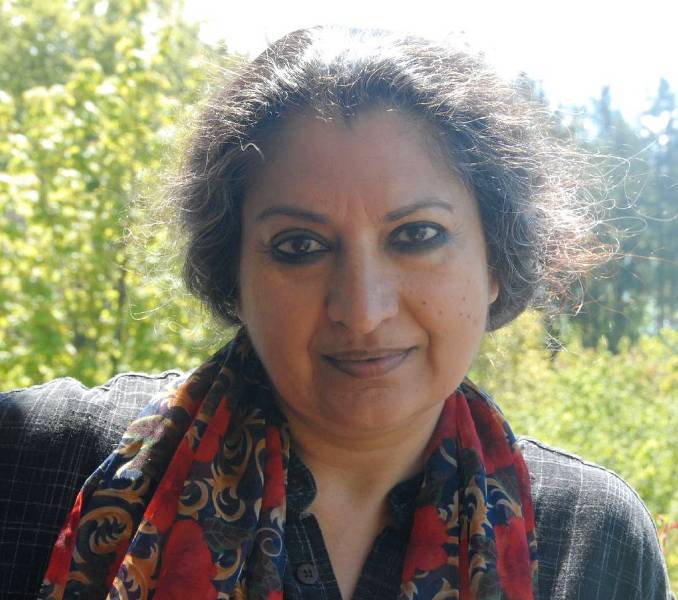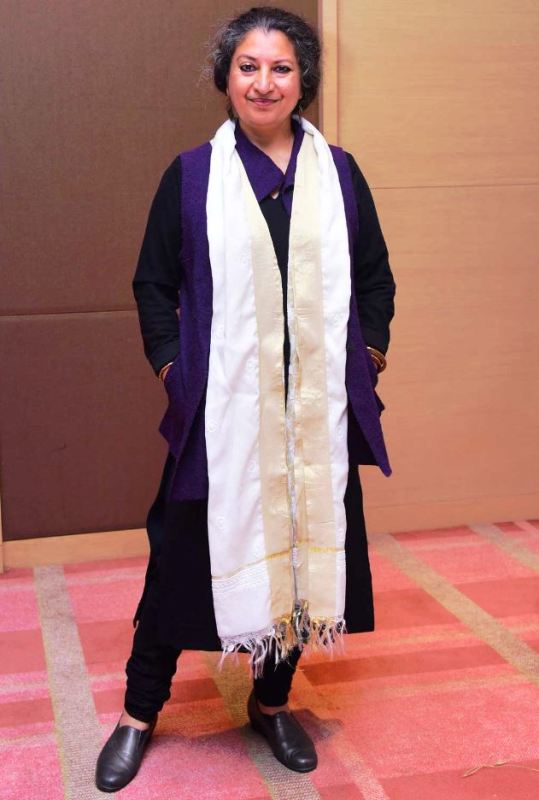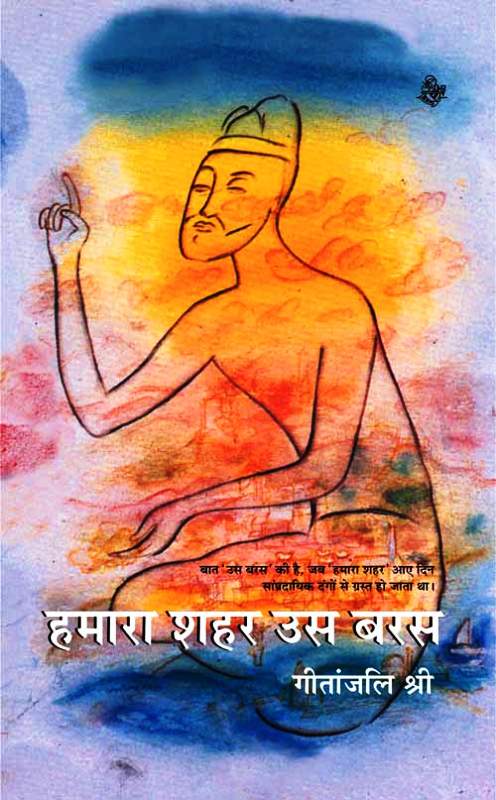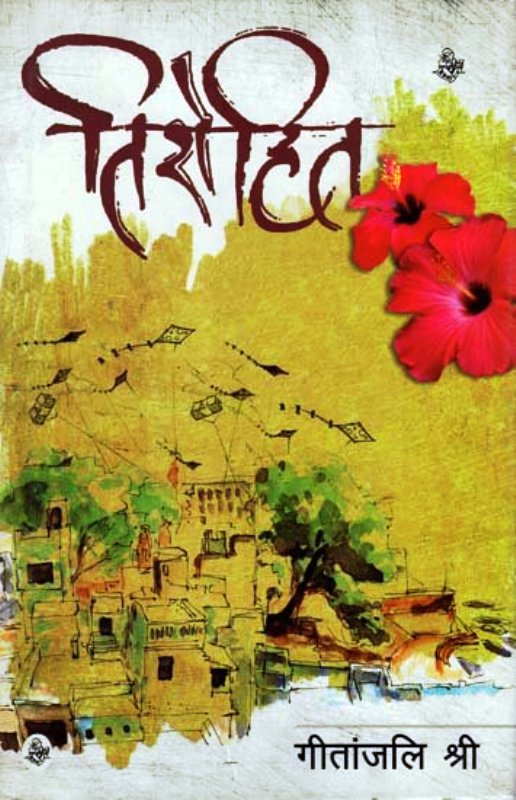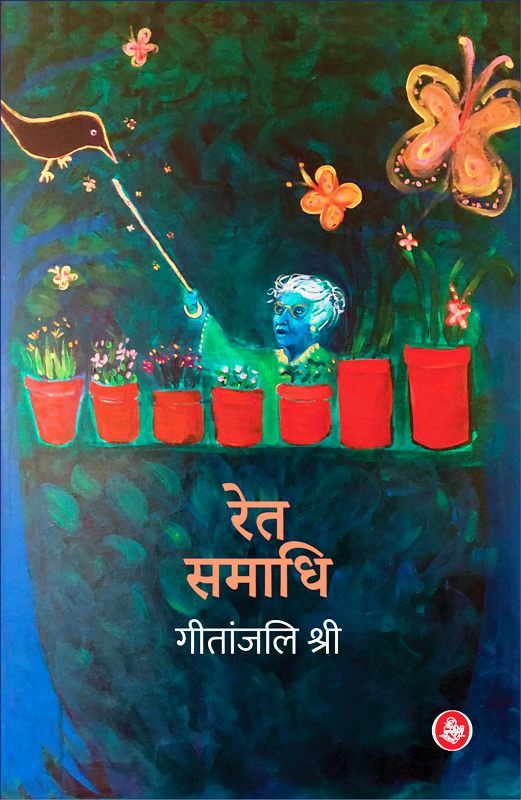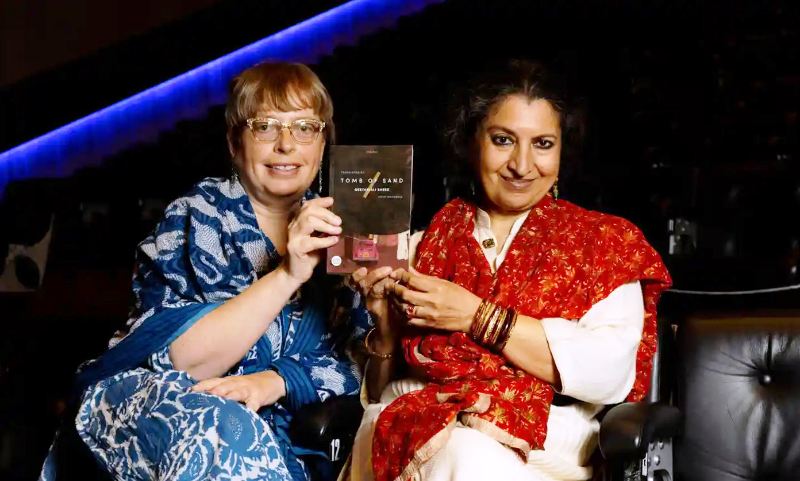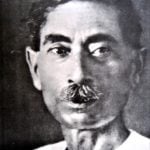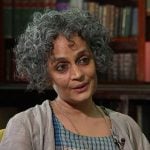Geetanjali Shree Age, Boyfriend, Husband, Family, Biography & More
| Bio/Wiki | |
|---|---|
| Real name | Geetanjali Pandey [1]Amazon Note: She took her mother's first name Shree as her last name. [2]Outlook |
| Profession(s) | Novelist, Short-story writer |
| Famous For | Winning the International Booker Prize (2022) for the novel 'Tomb of Sand'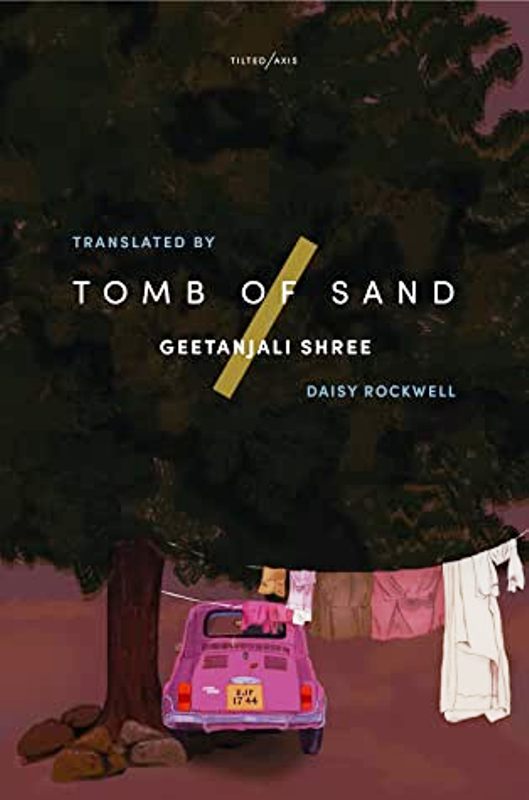 |
| Physical Stats & More | |
| Height (approx.) | in centimeters- 165 cm in meters- 1.65 m in feet & inches- 5’ 5” |
| Eye Colour | Dark Brown |
| Hair Colour | Salt & Pepper |
| Career | |
| First Novel | Mai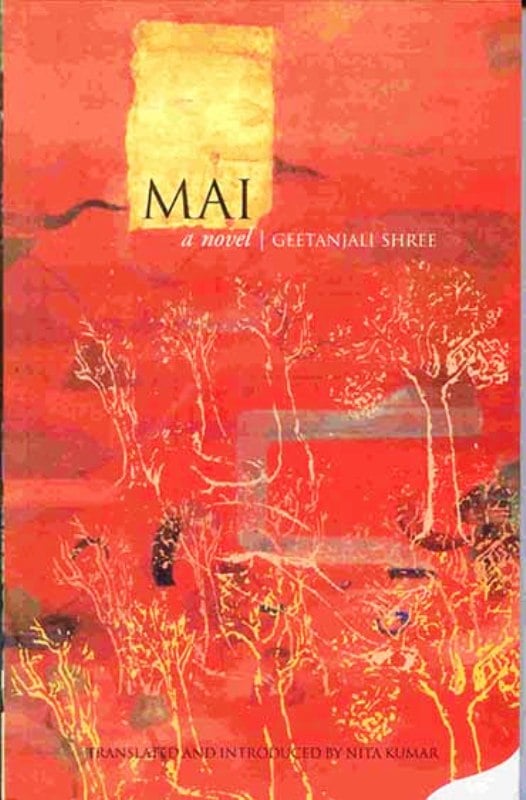 |
| Awards, Honours, Achievements | • Indu Sharma International Katha Samman • Krishna Baldev Vaid Sammaan (2014) • Hindi Akademi Sahityakar Samman • Dwijdev Samman • International Booker Prize (2022) 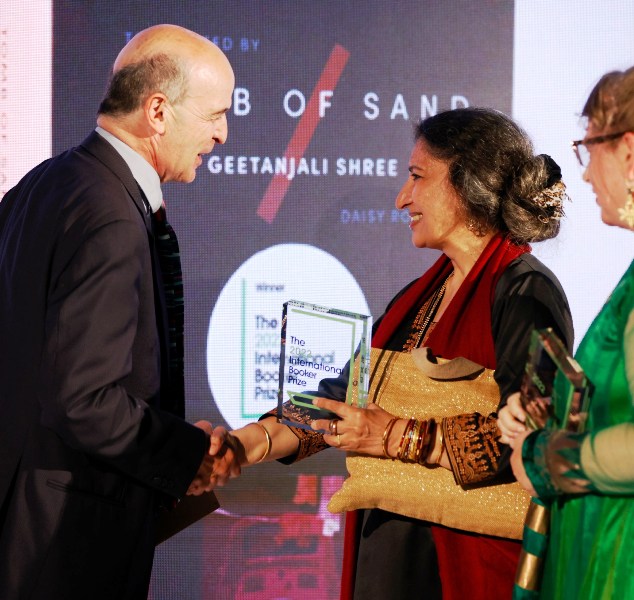 |
| Personal Life | |
| Date of Birth | 12 June 1957 (Wednesday) |
| Age (as of 2022) | 65 Years |
| Birthplace | Mainpuri, Uttar Pradesh, India |
| Zodiac sign | Gemini |
| Nationality | Indian |
| Hometown | New Delhi, India |
| College/University | • Lady Shri Ram College For Women, University of Delhi, New Delhi • Jawaharlal Nehru University, New Delhi • The Maharaja Sayajirao University of Baroda, Vadodara, Gujarat |
| Educational Qualification | • BA at Lady Shri Ram College For Women [3]The Times of India • Master of Arts in Modern Indian History at Jawaharlal Nehru University • PhD on 'Social and Intellectual Trends in Colonial India: A Study of Premchand' at MS University, Baroda [4]Outlook |
| Caste | She belongs to a Brahmin Hindu family. [5]Kalam- YouTube |
| Relationships & More | |
| Marital Status | Married |
| Family | |
| Husband/Spouse | Name Not Known |
| Parents | Father- Anirudh Pandey (civil servant)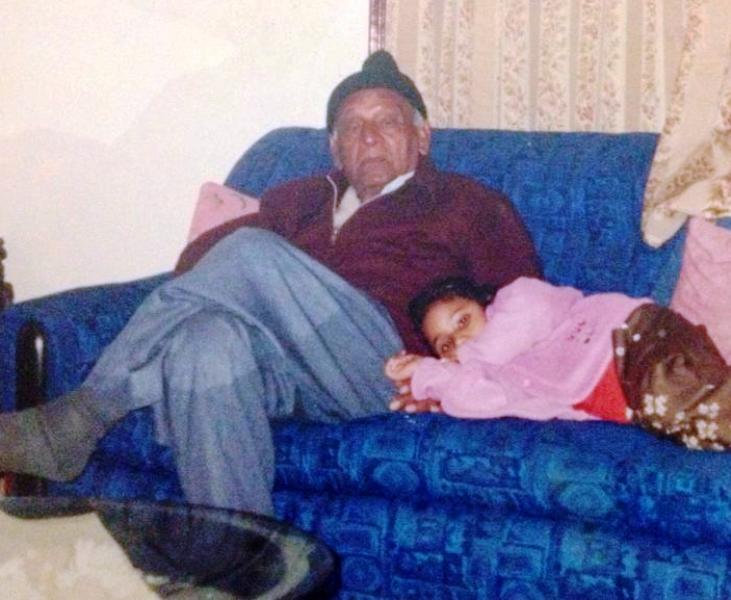 Mother- Shree Kumari Pandey 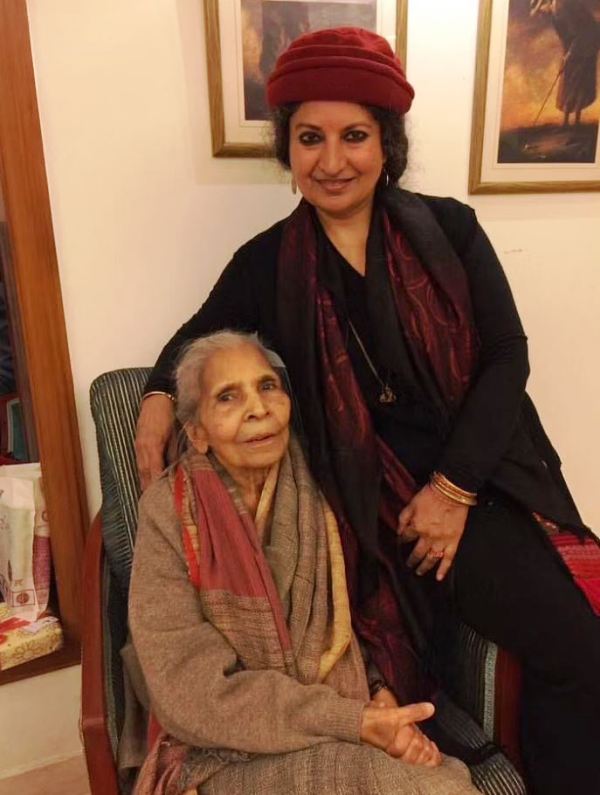 |
| Siblings | Sister(s)- Jayanti Pandey, Gayatri Shukla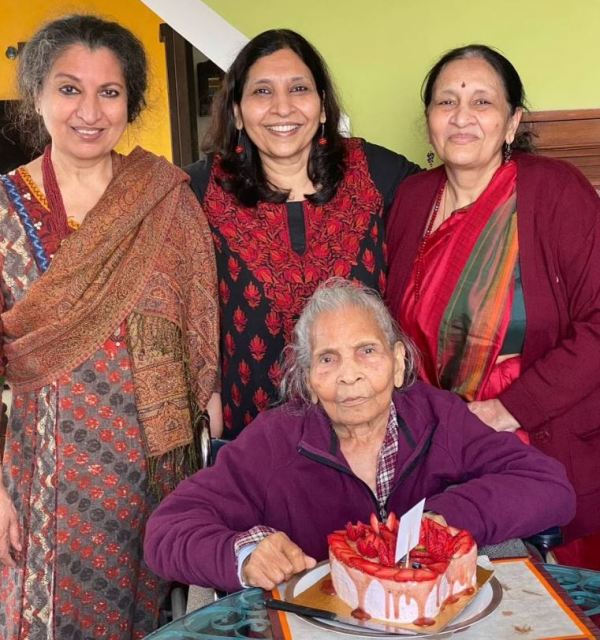 Brother- Gyanendra Pandey, Shailendra Pandey 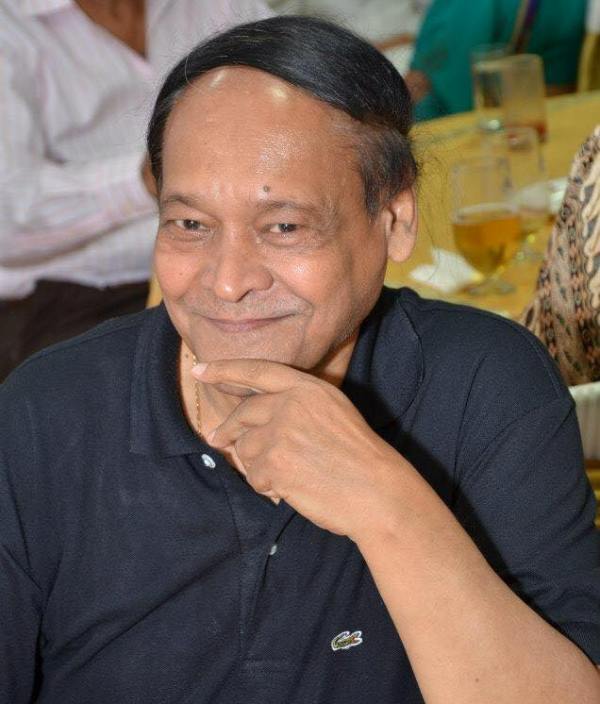 |
| Favourites | |
| Books | The Mahabharata, Soul Mountain by Gao Xingjian, Maila Anchal by Phanishwar Nath Renu, Things Fall Apart by Chinua Achebe, Basti by Intizar Hussain, Gora by Rabindranath Tagore |
| Singer | Mallikarjun Mansur, Amir Khan |
Some Lesser Known Facts About Geetanjali Shree
- Geetanjali Shree is an Indian novelist and short-story writer who is popular for her Hindi-language novel ‘Ret Samadhi’ (2018), which was translated into English as ‘Tomb of Sand’ by Daisy Rockwell. In 2022, ‘Tomb of Sand’ won the prestigious International Booker Prize.
- Ancestrally, she belongs to Ghazipur District, Gondaur village, Uttar Pradesh.
- Geetanjali Shree grew up in the eastern Indian state of Uttar Pradesh, where her father was posted as a civil servant. Although she received her education in the local English-medium schools of UP, Shree’s family and surroundings saturated her in the Hindi Language.
- Apart from being a Civil servant, her father was also a writer. However, he did not support Shree’s dream to become a Hindi writer as he believed that writing in English would be more prosperous. In an interview, while talking about her father’s opinion, she said,
My father was of the opinion that I’ll ruin my life if I wrote in Hindi. He would say that the future belongs to English…I studied in English medium but my mother spoke Hindi and that language was my mother tongue. It was the post-freedom era and people of the country felt love towards their own language. During that time, we even got to hear many Hindi fiction writers.”
- Growing up in Allahabad, UP, she had the chance to interact with prolific Hindi and Urdu writers like Sumitranandan Pant, Firaq Gorakhpuri, and Mahadevi Verma.
- A voracious reader since childhood, she developed an interest in Hindi literature by reading novels like Panchatantra, Chandamama, Parag, and Nandan.
- Celebrated Indian writer Munshi Premchand’s granddaughter was a close friend of Geetanjali Shree. She attributes her inclination toward literature to Munshi Premchand’s household. In an interview, Geetanjali said,
My very close friendship with Munshi Premchand’s granddaughter and close links from my childhood on with her entire family, I think, played a very positive role in sensitising me to ‘culture’. Theirs was a household full of practitioners and learners of Indian music and literature.”
- To pursue her higher education, she moved to Dehli. Although she felt the tug toward Hindi literature from the beginning, in the absence of formal Hindi education, History became a viable option for her.
- While listing the wide variety of literary works that she has read over the years in an interview, she said,
Reading was a major pastime. Very haphazard though it was. Lots of the Russian greats, the Victorian women greats, French classics, an odd Knut Hamson here, a Max Havelaar there, later Calvino, Kafka, Kundera, Latin American literature, Japanese literature, Indian writers of Bengal, Maharashtra, Karnataka, Kerala, and Hindi writers upto my own times, like Krishna Sobti, Nirmal Verma, Shrilal Shukla, Vinod Kumar Shukla, etc..”
- Her first forayed into Hindi literature while pursuing PhD in Munshi Premchand’s literary work when she converted her compilation of work into a book.
- After obtaining her doctorate degree, she took up a teaching job at Jamia Millia Islamia and Zakir Husain College in New Delhi. While she was juggling her teaching job with writing, she faced difficulty in delivering History lectures in English and writing her novels in Hindi. It was her supportive husband who advised her to resign from her teaching job and become a full-time writer.
- While talking about the beginning of her career in an interview, she revealed that she wrote her first story while travelling on a train with her husband. She said,
I was taking a train journey with my husband and asked myself what had I written so far if I want to be an author. With that dilemma, I wrote my first ever story on that train itself. When my husband read the story, he said it didn’t seem the writer was penning a story for the first time. That’s how the journey began.”
- In the 1980s, her career was kickstarted by the leading Hindi publishing house Rajkamal, which Sheela Sandhu then headed.
- She emerged as a short-story writer in 1987 with ‘Bel Patra,’ featured in the prestigious Hindi magazine ‘Hans.’
- In 1991, she published her first collection of short stories ‘Anugoonj.’
- She came into the limelight with her debut novel, Mai, which was shortlisted for the Crossword Book Award in 2001. In 2017, the novel was translated into English by Nita Kumar, who went on to earn Sahitya Akademi Translation Prize for it. The novel gives its readers a sneak peek into the life and consciousness of women of three generations and of the men around them, in a North Indian middle-class family. Mai has been translated into several languages including Serbian, Urdu, French, German, and Korean.
- In an interview, she revealed that she never learnt creative writing. She said,
No, I did not learn creative writing!…Like an Indian! I learn on the job! And get better and better!”
- Her second novel, Hamara Shahar Us Baras, centres around the time when Ayodhya was plagued by communal violence in the aftermath of the Babri Masjid demolition.
- In 2001, she authored the novel ‘Tirohit.’
- In 2006, she published the novel Khālī jagah, which focuses on the topics like violence, loss, and the quest for identity in the contemporary world. Its French translation is titled ‘Une place vide’ (2018) and its English translation is called ‘The Empty Space’ (2011).
- While talking about her fondness for music in an interview, she said,
I love Hindustani music and listen to it most of the time. Mallikarjun Mansur and Amir Khan are my favourites. My collection could make a connoisseur jealous!”
- In 2018, she authored the Hindi-language novel ‘Ret Samadhi,’ which talks about the destructive impact of borders between religions, countries, and genders. The novel humorously presents the journey of an 80-year-old Indian woman to Pakistan after her husband’s death.
- She gained international recognition for the novel ‘Tomb of Sand,’ which is the English translation of her novel Ret Samadhi (2018). The novel was translated into English by Daisy Rockwell.
- On 26 April 2022, Tomb of Sand won the International Booker Prize, becoming the first Indian book to receive the accolade. [6]The Booker Prizes Geetanjali and Daisy received 50,000 pounds literary prize, which they split evenly.
- She also has the credits of various academic publications under her belt which includes Premchand and Industrialism: A Study in Attitudinal Ambivalence”, featured in the journal The Indian Economic and Social History in 1982, “Premchand and the Peasantry: Constrained Radicalism,” featured in the journal Economic and Political Weekly in 1983, and “The North Indian Intelligentsia and the Hindu-Muslim Question” featured in Journal of Regional History 1993.
- She has been a fellow of the Ministry of Culture, India, and Japan Foundation.
- Her other literary works include Agyey Kahani Sanchayan, Vairagya, and The Roof Beneath Their Feet.
- In an interview, she revealed that she has an unfinished book titled ‘The Name of the Rose.’
- Apart from writing, Geetanjali Shree has also been actively associated with theatre. The origin of her association with theatre can be traced down to the year 1989 with a theatre group called Vivadi, which comprised writers, artists, dancers, and painters.
- She is also known for the adaptation of Rabindranath Tagore’s Gora, the longest of Tagore’s twelve novels, into a theatrical production. Another Tagore’s novel which she adapted into a theatrical production is ‘Ghare Baire,’ which was staged at the Kamani Auditorium in New Delhi.
- Geetanjali Hindi adaptation of the Chinese play Lao Jiu: The Ninth Born, by Kuo Pao Kun, was staged at the New National Theatre, Tokyo, where groups performed three different plays by Kuo Pao Kun from Japan, India and Indonesia.
- Thereafter, she penned the play, Nayika Bheda, which was staged at the Prithvi Theatre in Mumbai.
- One of her most successful scripts is the adaptation of ‘Umrao Jaan Ada,’ an Urdu classic novel by Mirza Hadi Ruswa, which narrates the life of a courtesan. Geetanjali Shree’s adaptation reversed the male vision of the original novel and attempted to give a radical feminist reading of the text. The theatrical adaptation was first staged at the Shriram Centre in December 1993. Immensely appreciated the play was later staged numerous times in Delhi, Bombay, and Kolkata. It was also filmed to telecast on TV. An English translation of her adaptation of ‘Umrao Jaan Ada’ was performed by a group called Rasik Arts at Tarragon Theatre in Toronto.
References/Sources:

